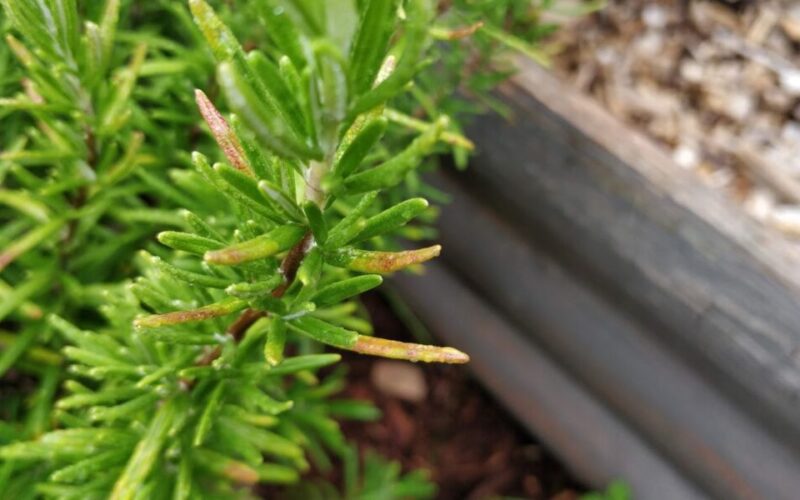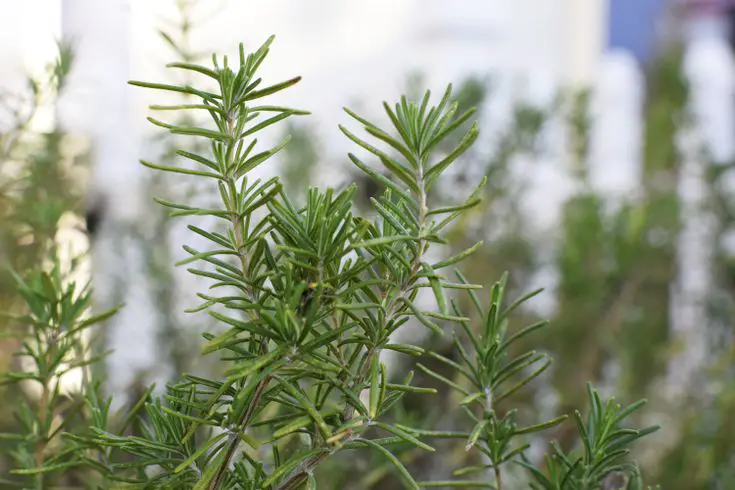We know Rosemary in several ways. It is used as an herb; it is used in desserts for its earthy aroma and it is used in savory dishes for its aromatic expertise. The good thing about the rosemary plant is that it’s resilient. This means that if you notice the leaves turning yellow, chances are that there are multiple issues that you are struggling with.

Yellow rosemary leaves are a grower’s worst nightmare. It could be due to nutritional deficiency, issues with watering, or due to some other complications. For better understanding, we will highlight all the potent issues in this guide for you to look through and implement the relevant control measures.
Why is my Rosemary Leaves Turning Yellow?
Rosemary leaves turning yellow is a very common issue and can be fixed very quickly if you implement the right measures. However, you have to be proactive about finding out what’s causing it if you wish to correct the issue.
Here’s a list of the most important factors to keep in mind:
1. Improper watering
When you are growing any kind of herb, optimal watering is crucial, especially if you want it to grow well and on the right track. Both underwatering and overwatering have negative impacts on the rosemary leaves. If the plant is overwatered, it will directly impact the root system and end up turning the leaves yellow.

However, on the flip side, if the plant is underwatered, it has a similar impact and contributes to the leaves turning yellow. Excess waterlogging in the soil also leads to risks of fungal diseases in the plant, which is another reason why the leaves are turning yellow. Water stress is very common in rosemary plants, so be aware of that.
Solutions
Your first step is to check the water levels. You can compensate for the low water levels but you will have a hard time reverting if you have overwatered the plant. Waterlogging is one of the most common issues that lead to the leaves turning yellow. You can test the water levels using a moisture meter to assess the next step.
2. Extreme heat
Extreme and prolonged sun and heat exposure on the rosemary plant is another reason why the leaves could be turning yellow. Excess heat “burns” the leaves, leading to risks of yellowing and damage that you potentially notice on the plant. If you find the leaves curling inwards from the corners, it is a common sign of heat stress on the plant.

The lack of sunlight leads to a lack of photosynthesis in the plant, which can cause the leaves to turn yellow. This is a very common issue known as chlorosis, which leads to the leaves of rosemary turning yellow and eventually dying.
Solutions
If you are growing rosemary, you need to ensure that the plant is getting 7-8 hours of prolonged sunlight exposure. However, if the temperature rises drastically, you need to relocate the plant somewhere shady or you can cover the top with some temporary shade until the temperature goes down.
3. Nutrient deficiency
Rosemary plants are very susceptible to nutrient deficiency. But ideally, we’d recommend that you keep a check on the soil’s nutrient levels. Now, just low nutrient levels and excess nutrient availability due to high levels of fertilizer in the soil can also end up doing worse than good.

A few typical nutrient deficiencies in the soil lead to risks of the leaves turning yellow, both around the upper part of the plant and sometimes around the lower part of the plant.
Solutions
Your easiest way to fix the nutrient imbalance in the soil is to get your hands on a good-quality fertilizer. Herb fertilizers are considered the best for your rosemary plant. Also, you don’t want to overdo the application of fertilizer in the soil. Instead, stick to spraying some twice a year, especially during the spring and summer months.
4. Insect attack
Pests and insects are a culprit without any questions when it comes to you noticing the rosemary leaves turning yellow. Some of the common types of pests that you should be on the lookout for are aphids, whiteflies, spider mites, etc. Since they prevent nutrient uptake, it leads to the leaves turning yellow.

Also, the insects are very tiny and often missed by the naked eye. So, we’d recommend that you look at the underside of the leaves since that’s where they are mostly localized. If you don’t implement tactical measures immediately, chances are that the insect infestation can eventually lead to risks of viral diseases in the plant.
Solutions
If you are using insecticides, we’d recommend using chemically safe versions since you will eat the rosemary buds as part of your cooking. There are a few popular and organic variants of insecticides that you can look into.
5. Diseases
Lastly on the list are the diseases. There are quite a few that you need to be on the lookout for. However, the most common group of diseases is fungal infestations. Since the rosemary plant doesn’t do well with waterlogging, if that happens, there are chances that the rosemary plant will get damaged in the long run.

The prevalent diseases also prevent optimal nutrient uptake, which further leads to the leaves turning yellow or even curling around the corners
Solutions
The first step is to remove the yellow leaves and the curled leaves from the plant. Since the fungal disease is the most potent cause, you need to spray the plant with a good-quality fungicide to eliminate the vectors from the root. Always choose one that is herb-safe and won’t harm you when you eat the rosemary leaves later.
Conclusion
Witnessing the rosemary leaves curling and turning yellow is quite common. However, you need to take immediate measures to fix the issue before things take a turn for the worse. We’d recommend first checking out what’s causing the issue and then looking into implementing the control measures we shared.

